
Ray-Ban
RAY-BAN: THE HISTORY OF THE ICONIC SUNGLASSES BRAND
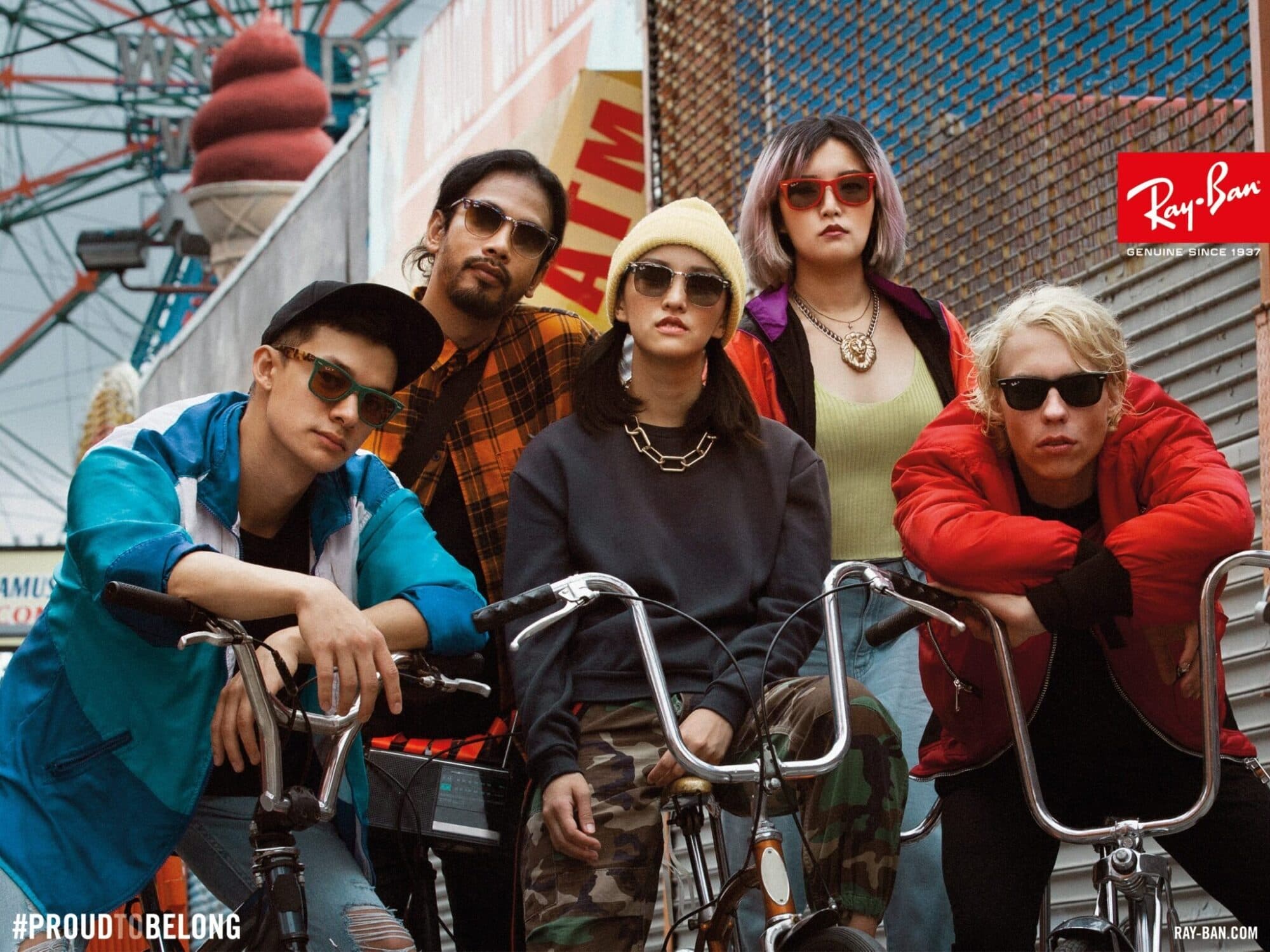
Not only Timeless style, simplicity and freedom of expression are the core values of Ray-Ban, a leader in sunglasses and eyewear for generations. But also, Ray-Ban has earned a unique place in the world of eyewear and its sunglasses have been worn by many celebrities over the years. Ray-Ban is synonymous with sunglasses. In fact, with the passage of time, Ray-Ban has earned a reputation for superb design, excellent performance and unequivocal sophistication, which are the characteristics that have made it world famous.
Index
- History of Ray Ban
- News Coverage
- The Ray Ban principles
- Brand Development
- The Brand under Luxottica
- Ray Ban in the 21st Century
- The Never hide Campaign
- Ray Ban in the second half of the 2000s
- Celebrity Culture
- New Technologies
- An Eye on the Present and an the Future
- Ray Ban Studios
History of Ray Ban
Ray-Ban is a brand of sunglasses and eyeglasses founded in 1937 by the American company Bausch & Lomb. The brand is best known for its Wayfarer (“traveller”) and Aviator (“aviator”) lines.
In 1929, Colonel John A. Macready of the US Armed Forces Air Crops worked with Bausch & Lomb in Rochester, the New York-based medical equipment factory. The goal of the collaboration is to create aviation sunglasses that prevent pilot distractions caused by intense shades of blue and white in the sky. In particular, Macready is concerned about how the goggles can fog up, thereby greatly reducing visibility at high altitudes.
Soon after of which the prototype of the new product, created in 1936 and known as ‘Anti-Glare’, is edged in plastic and fitted with green lenses that eliminate reflected light from the glass without obscuring visibility. Resistant impact lenses were also added in 1038.
News Coverage
According to the BBC, the glasses use “kalichrome lenses to shape detail and minimise fogging by filtering out blue light, making (the glasses) ideal for foggy weather.” During the 1950s, the brand launched the Echelon (Caravan) model, which was as successful as the Wayfarers and Aviators.
1965 also saw the introduction of the Olympian I and II, which became popular when Peter Fonda wore them in the film Easy Rider.
Other illustrious 1960s debuts included the angular and masculine Ray-Ban Meteor and the cat-like Ray-Ban Laramie.
The company also produced special edition lines, like The General in 1987, which bore similarities to the original Aviators worn by General Douglas MacArthur in World War II.
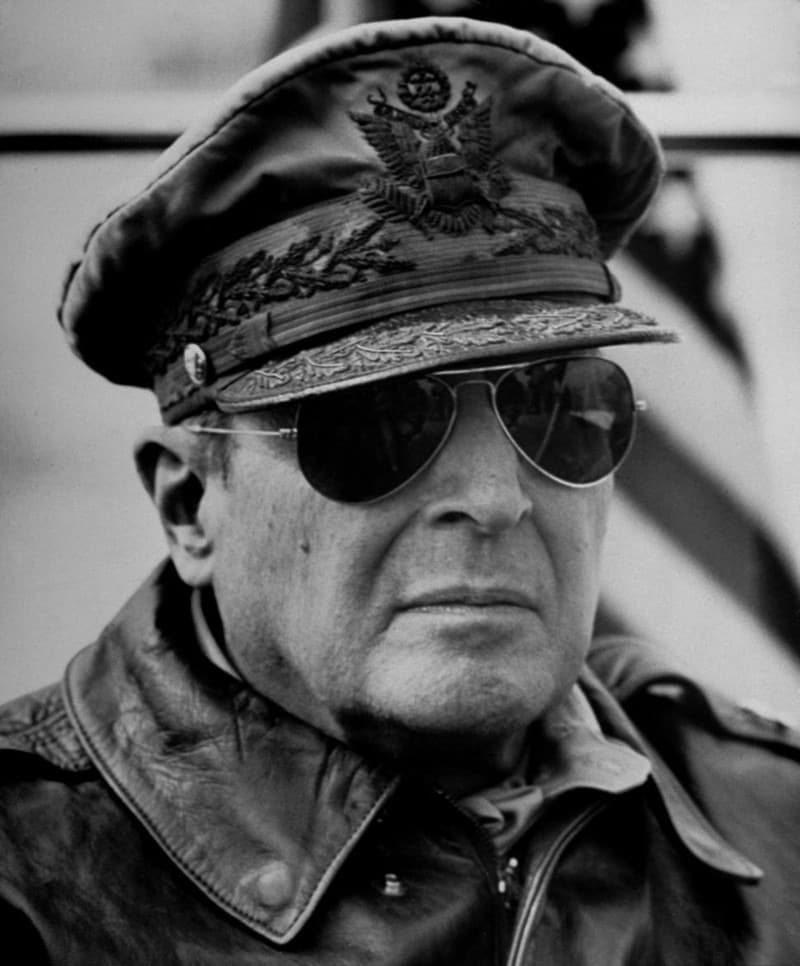
Nearly in 1999, Bausch & Lomb sold the brand to Italian optical conglomerate Luxottica Group for $640 million, after decades of producing famous sunglasses. From this moment on, the company concentrated on moving into the field of optical operations, buying Storz and Chiron Vision.
Ray Ban Principles
Since its foundation, Ray-Ban brand has always been based on aspiration. From its original concept of sunglasses for American pilots, and through the sponsorship of many celebrities, the brand has categorized itself as one that anyone would want to be a spokesperson for. Owning a pair of these sunglasses should be the ultimate dream of every fashion addict who aspires to look like their idols.
The invention of the iconic Aviator models has its roots in the development of the power of flight. In the 1930s, the rapid development of air force design allowed pilots to fly further, faster and higher. But all this creates a problem. Pilots report that the high levels of glare experienced during high-altitude flight cause visibility difficulties, headaches and nausea. This, of course, reduces the pilots’ ability to operate at the high levels needed for military action. Consequently, a solution is urgently needed.
Some time earlier, Colonel Macready experienced a flight in a hot air balloon. During this experience, he was blinded by the sun at all times. This gave him the idea of a pair of dark glasses that would shield his eyes and enable him to see his surroundings. In fact, he is convinced that these products will be able to solve the problems experienced by pilots. He turned to Bausch & Lomb to create the new sunglasses and the company set to work. After several experiments, the final prototype was made in 1936.
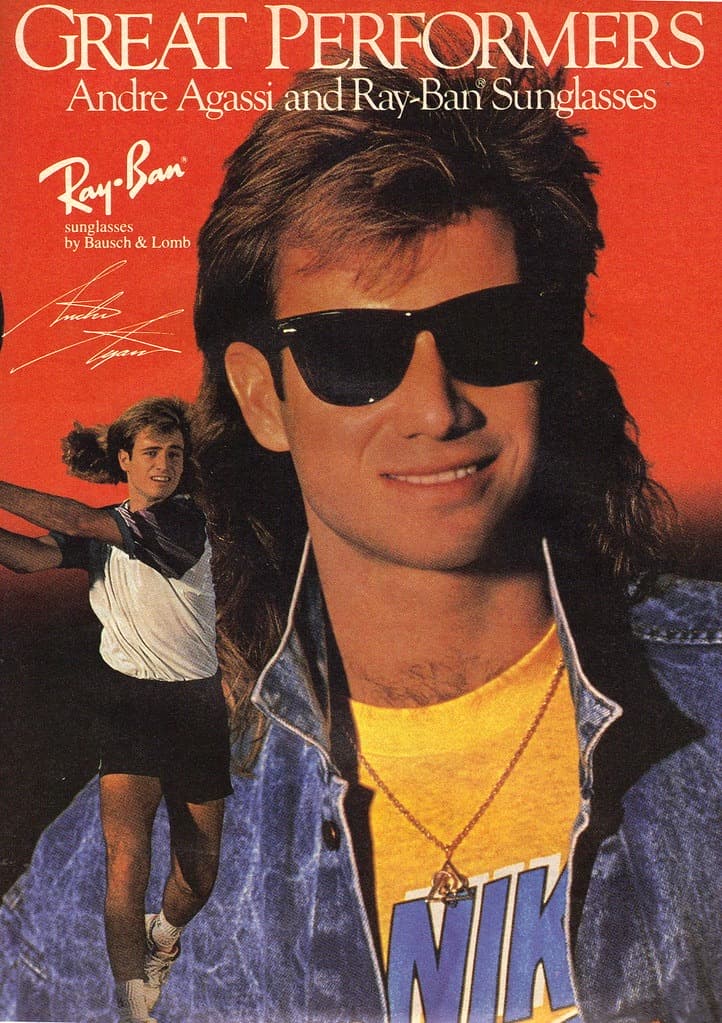
Brand development
Later years, the plastic edges were replaced by metal ones. It is also considered that the term “anti-glare” is not sufficiently impactful to enhance the new glasses. So the name “Ray-Ban” was adopted, along with the Aviator tag as a link to the field of aviation. And the rest, as they say, is history. Ray-Ban Aviators are so successful that it’s not just pilots who wear them.
Vintage photos show high-ranking officers wearing them, and before long, they’re considered synonymous with glamour among military pilots. This makes the spectacles a trend that continues to be popular for the next 75 years. Soon, the products were moving out of the military and into the everyday world of other people.
By 1938, the company released the Ray-Ban Shooter, designed specifically for firearms users, in versions with yellow or green lenses. In particular, the yellow lenses are particularly useful for their ability to reflect blue light, increasing detail and minimizing fogging, making them great to use in foggy conditions. The design also includes a so-called ‘cigarette circle’ centre that allows both hands to be kept free. This has become the main feature of the Shooters.
On the wave of success, the company launched the Outdoorsman in 1939, aimed at hunting, fishing and shooting enthusiasts.
The Brand under Luxottica
In many ways, it now seems inevitable that Ray-Ban would end up under the control of Luxottica. This company, founded by Leonardo Del Vecchio in 1961, began its existence in Agordo and moved to Milan. Del Vecchio was initially educated at a scientific institute, but eventually decided to join the world of eyewear. So he went to Agordo, the heart of the Italian eyewear industry, and set up his own company to manufacture sunglasses.
Over time, the company becomes convinced of the need to take control of all aspects of the operation. So it buys a distribution company, Scarrone, in 1974 and then signs a number of well-known contracts, such as Armani and Vogue. In addition, he buys shares in several optical companies and buys other eyewear suppliers, such as Pearl Vision and OPSM. It buys Erroca for 20 million euros and Oakley for 21 billion dollars respectively, becoming the largest optical company in the world.
Today Luxottica represents more than 80% of the market, including the eyewear lines of many fashion houses, such as Versace, Burberry, Stella McCartney, Chanel and Armani.
Ray Ban in the 21st Century
Luxottica begins redesigning Ray-Ban during 2000s while taking into account of new fashion trends. For a significant reshaped design known as the RB2132, the size of the edges is reduced and acetate is replaced with a lighter type of plastic.
However, Luxottica revived the brand’s fortunes by launching a major expansion, which was followed by a long decade of whirlwind activity. In 2003, Ray-Ban Optical optimises the prescription sunglasses where their aim is to combine superb design and unparalleled attention to detail in its craftsmanship. All this, of course, without forgetting the cultural roots that have made the brand so famous.
Also in 2003, Luxottica launched Ray-Ban Junior, a range of sunglasses designed specifically for children aged 8 to 12. This line was further expanded in 2005 to include lighter yet durable hypoallergenic frames.
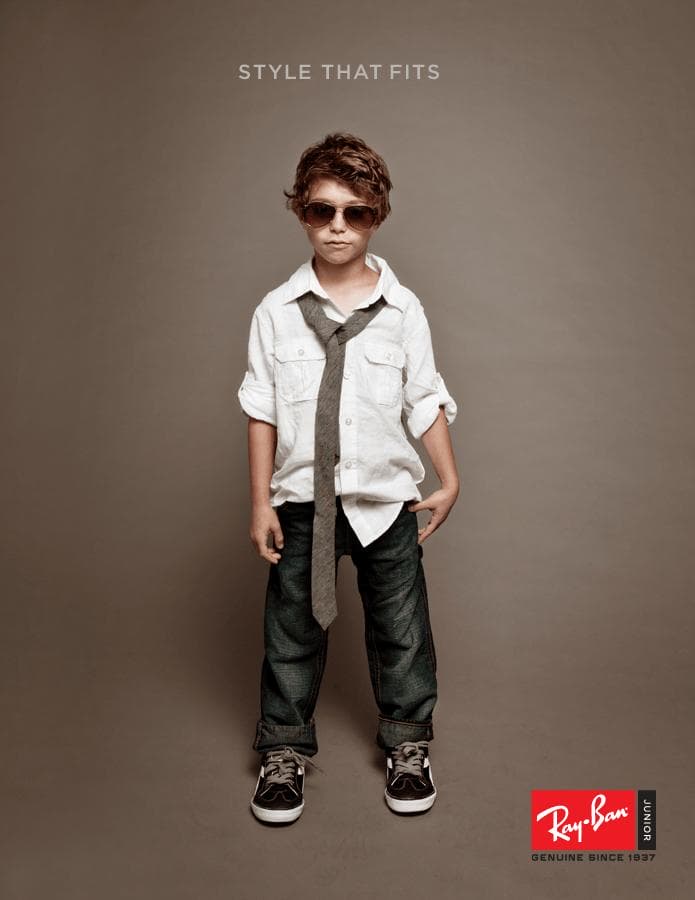
2006 saw the modernisation of the Wayfarer model. To mark the occasion, music photographer Mick Rock was hired to create a memorable portfolio of images to bring the Wayfarer into the modern era. Indie rock musicians were hired for this groundbreaking project, known as Ray-Ban Uncut: The Wayfarer Session.
In addition, artists such as Peaches, James Murphy of LCD Sound System, Bobby Gillespie of Primal Scream and Johnny Marr of The Smiths offer their contemporary take on the new Wayfarer design.
The Never Hide Campaign
A 2007 advertising campaign, entitled Never Hide, defines the concept that Ray-Ban wearers simply need to feel consistent with their identity in order to make themselves the centre of attention. This campaign involved recognizable personalities from the past and present, along with “ordinary” Ray-Ban buyers who want to be noticed. With which global nature of their innovation has a major impact on the brand’s success where the initiative will culminated in 2011 when thousands of the brand’s fans gather in prestigious locations around the world to celebrate the brand’s products.
As part of a digital event of historic proportions, visitors performed at NEVER HIDE locations around the world and photographs taken are broadcast on the official Ray-Ban.com website. Over 10 million users were reached for the occasion.
In 2009, Ray-Ban reinterpreted its most beloved models in an explosion of new colours with the Never Hide Colorize campaign. Using a special kit, fans had the chance to create their own unique pair of sunglasses. The kit contained a pair of white Ray-Ban Wayfarer sunglasses, stencils and five specific markers to colour the surface of the frame.
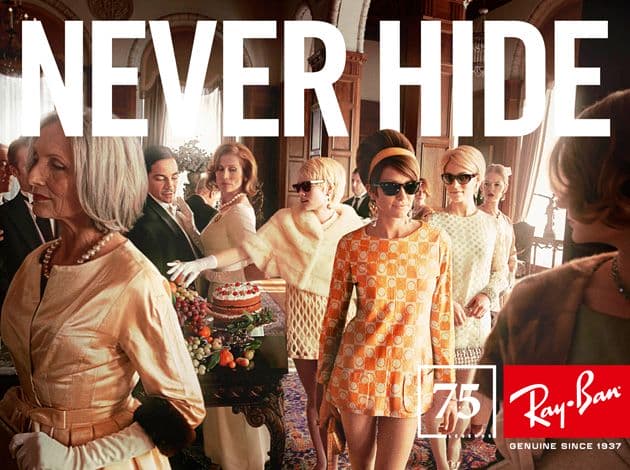
Ray Ban in the Second Half of 2000s
In 2012, Ray-Ban celebrates its 75th anniversary by releasing a limited edition book of representative images of legendary figures from the worlds of music, film, style and popular culture.
For its sales channels, the brand begins to design an omnichannel experience across the globe. In 2016, the first flagship shop was opened in China and after just six months, the number amounted to over 50 shops. In 2018, 100 shops were surpassed.
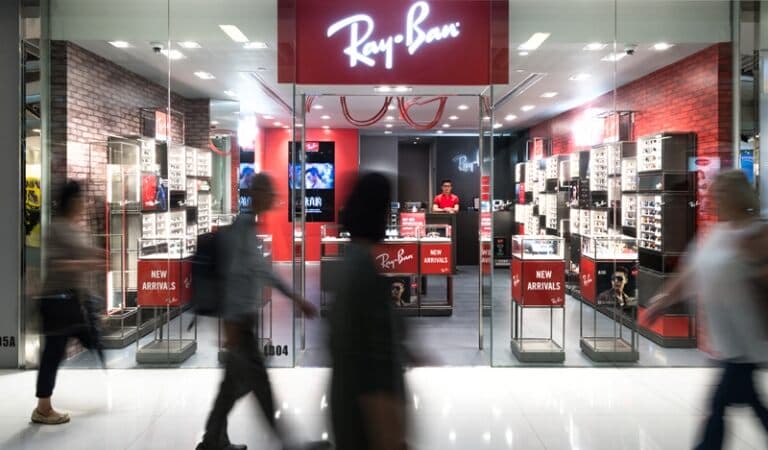
The brand’s success over the years earned it the “Brand of the Year” award from the Accessories Council in 2016.
Instead, 2019 is the year of the collaboration with the Scuderie Ferrari. Ray Ban has created a capsule collection of limited edition sunglasses to tell the story of the single-seater races.
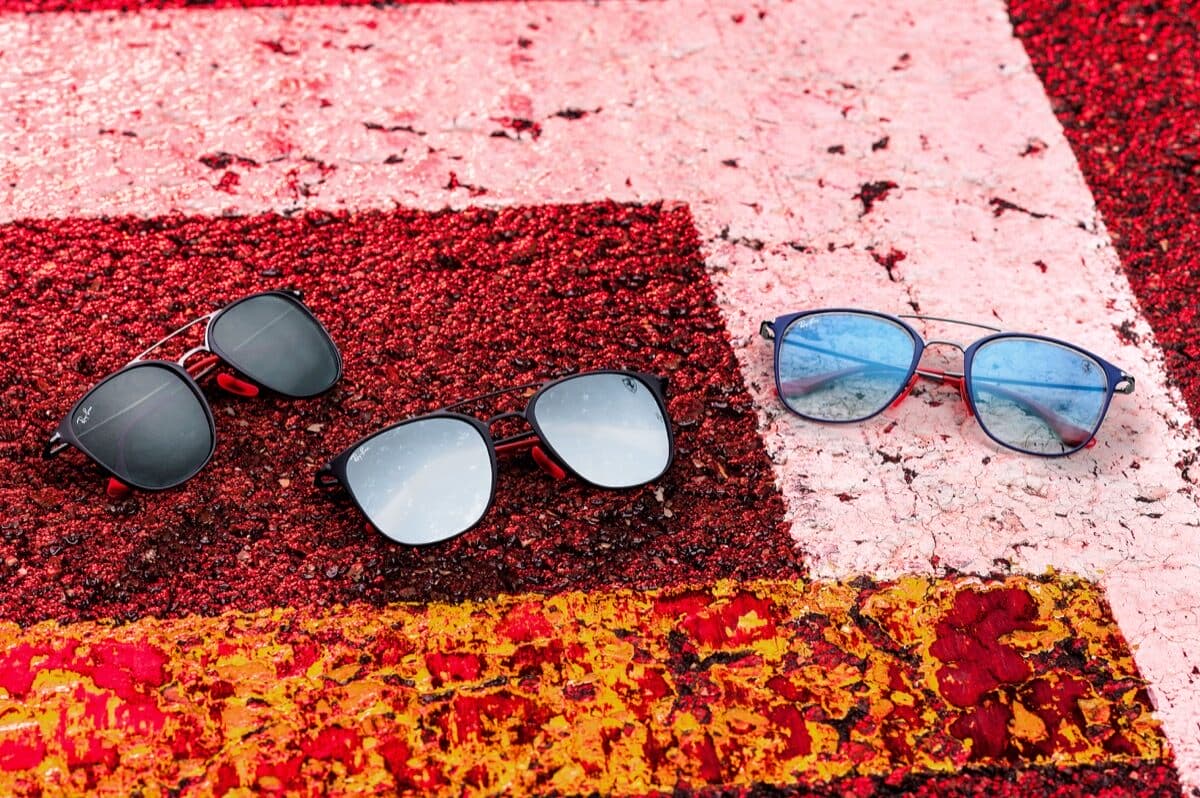
In 2021 they launch a special capsule, Jackie Ohh II. Inspired by fashion icon Jacqueline Kennedy Onassis, the oversized model sports a distinctive butterfly shape with rounded lenses. The classic black frame is paired with elegant blue gradient lenses, reminiscent of Hollywood style.
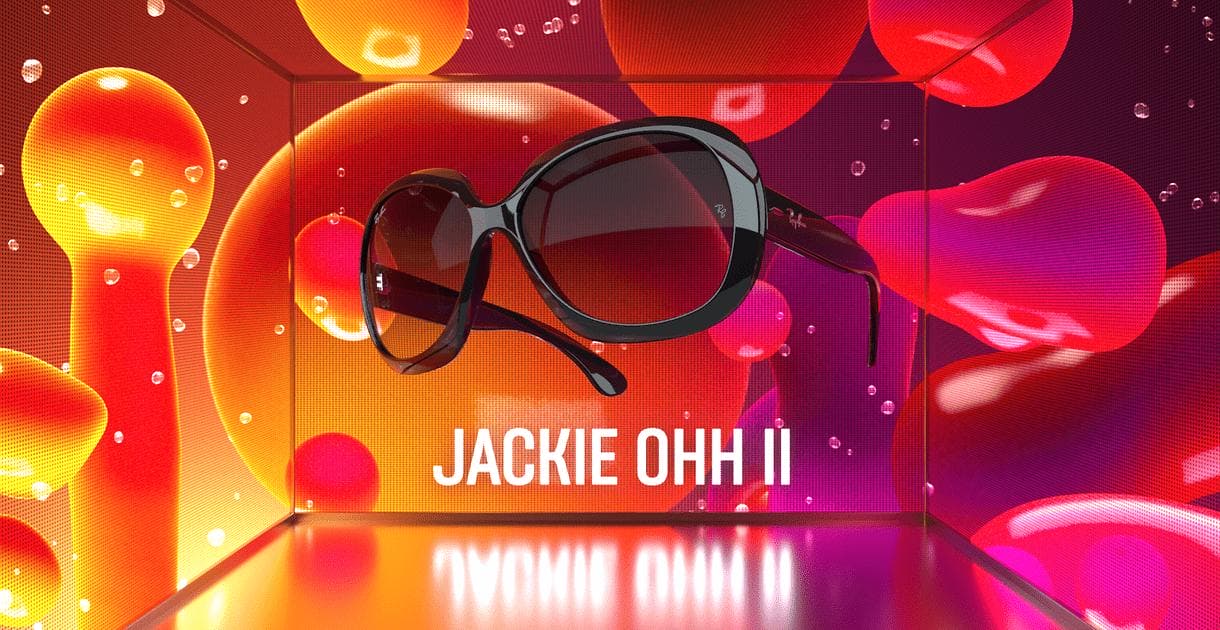
Celebrity Culture
From James Dean to Audrey Hepburn to Michael Jackson, Ray-Ban has proven to be an indispensable accessory for cultural icons. Indeed, Michael Jackson wore Ray-Ban ‘Aviator’, ‘Wings’ and ‘Wayfarer’ models in several of his appearances between 1982 and 2009, making them popular even before their international success and turning them into his trademark.
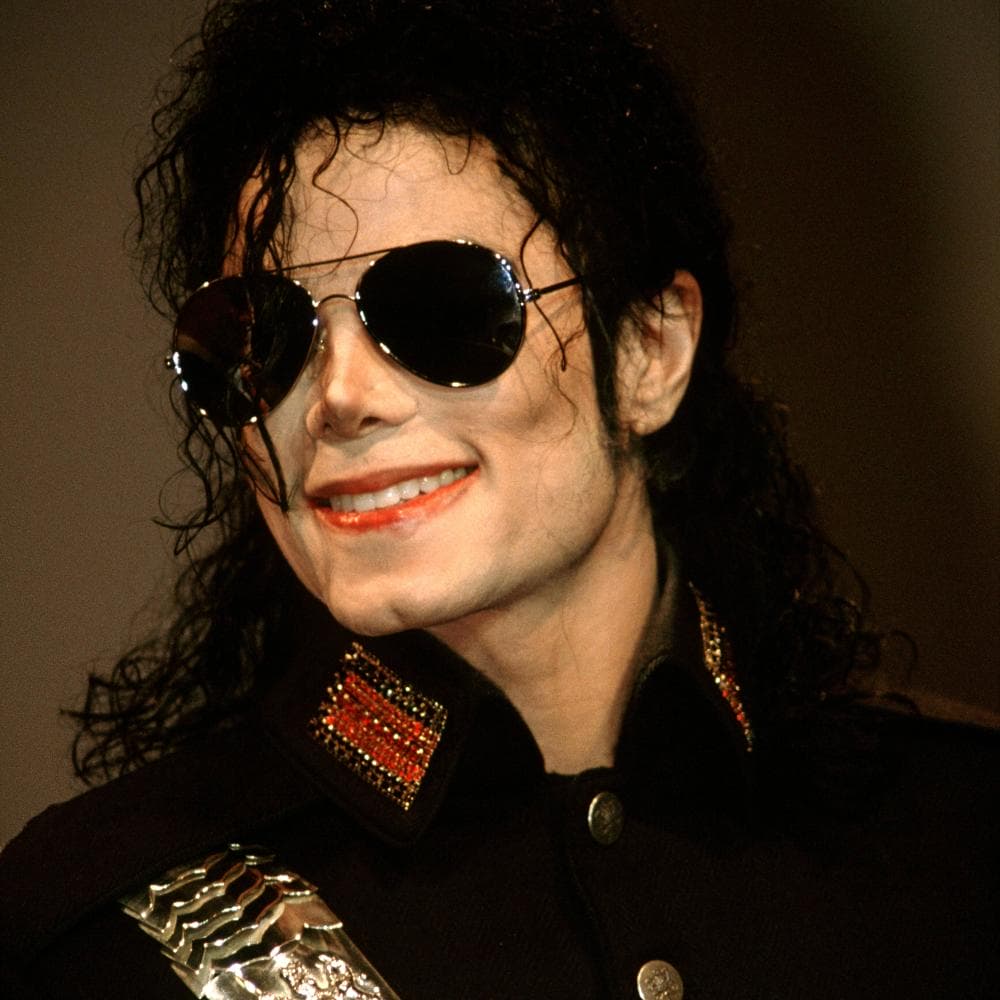
The brand continues to combine celebrity culture in its campaigns, for example with the Ray-Ban Re-masters Project in 2008. Well-known musicians such as Paolo Nutini, The Kills, Black Kids, Ladyhawke and Ipso Facto perform covers from the 50s and 60s to recall the popular Ray-Ban Club design of the era.
Following the Never Hide campaign, Never Hide Colorises was born. Wayfarer fans can create their own unique colour designs using a special pen on white borders, along with other innovations including designs based on colourful prints (such as a New York underground map).

The Rare Print line once again ventures into film and music culture through a series of themed prints that give the brand a contemporary profile. The core concepts are Buttons Pins and Comics. And, most recently, the brand has supported the LGBT community by incorporating the colours of the rainbow in its advertising.
New Technology
In addition to the creative promotion of the brand, Ray-Ban never neglects the technological aspects of its design. Constantly striving to improve its products, the brand launched the Ray-Ban Tech Fiber Collection, using the latest manufacturing techniques in eyewear. The wraparound edge construction is made from seven lightweight layers of carbon fibre, making the glasses durable and extremely flexible to resist accidental damage. The lenses have similar innovative features.
Created from polycarbonate and crystal, these lenses with superb polarisation capabilities, along with natural high definition vision, have a special reflective coating that eliminates fogging and enhances UV protection.
One eye on the Present and One eye on the Future
During this decade, Luxottica continued its sponsorship strategy through celebrities, using a multi-faceted approach to raise the brand’s profile (such as themed concerts). The Never Hide campaign continued with its global advertising events, keeping the main ethos unchanged but reinventing its application.
On 24 March 2014, Ray-Ban signed an agreement with Google to collaborate on the development of Google Glass. What is it all about? Basically, a piece of wearable technology. They look like a pair of regular glasses, but they allow the wearer to perform functions that can be performed by a laptop or smartphone. With a built-in voice, this device allows you to access the internet, the information store, as well as make calls and take photos.
In 2017, frames were designed in graphene, one of the thinnest and lightest materials in existence, but also the strongest and most flexible. This material makes its debut in eyewear thanks to Luxottica and Ray-Ban, confirming the Group’s pioneering and innovative spirit.
Ray Ban Studios
If the relationship with the world of music and entertainment has been inescapable and fundamental to the brand, it cannot fail to be celebrated. Thus, in 2018, Ray-Ban is launching a new concept rooted in the brand’s musical foundations: Ray-Ban Studios.
Ray-Ban Studios is a creative hotbed that celebrates self-expression as an affirmation of individuality. It serves as a place for artists to meet and exchange ideas in order to cultivate their passions. For this project, several artists were selected, including The Martinez Brothers, DJs from the Bronx, who created a limited edition capsule collection of 500 pieces.
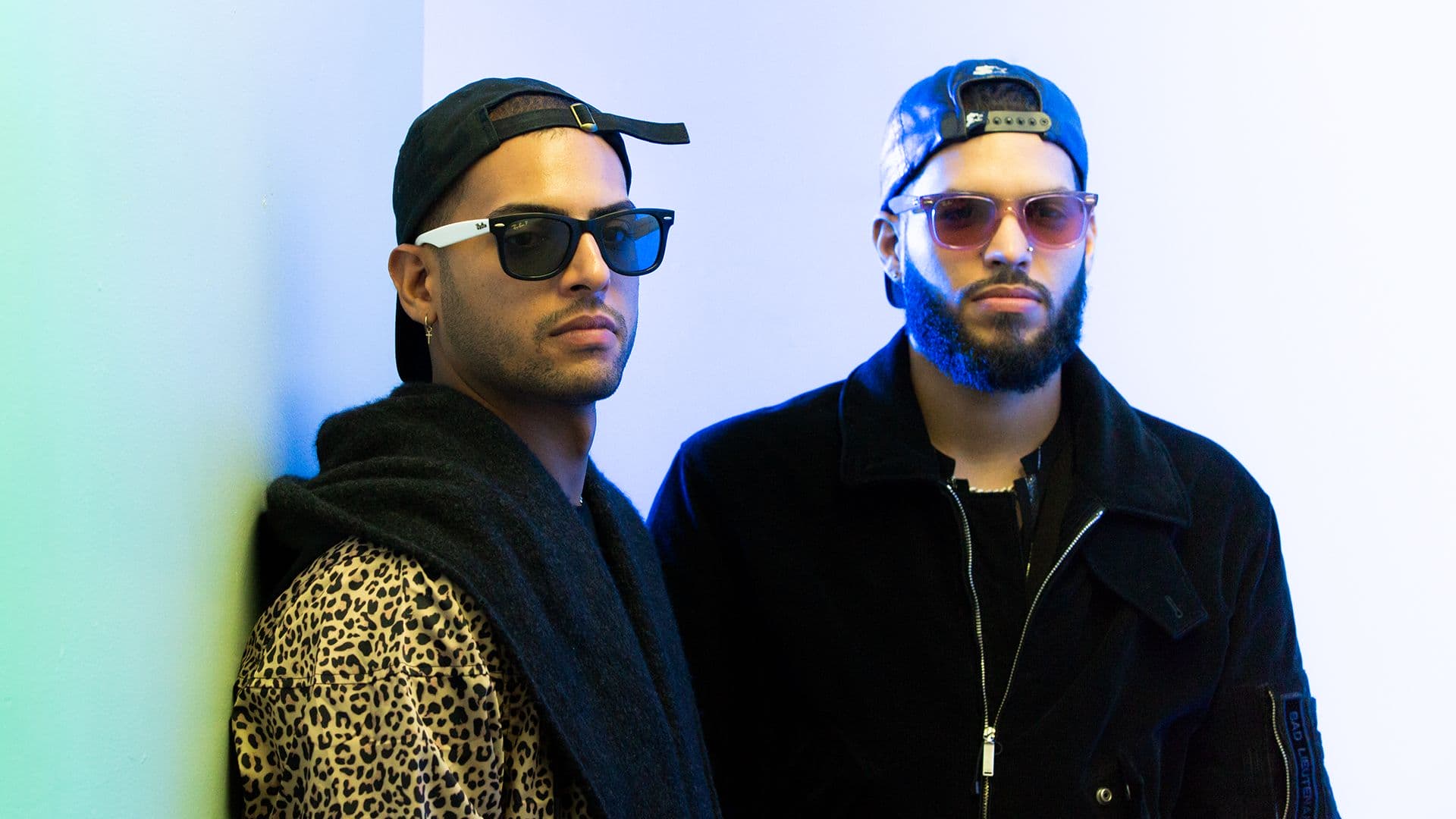
You may also like:


